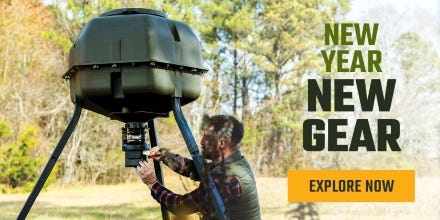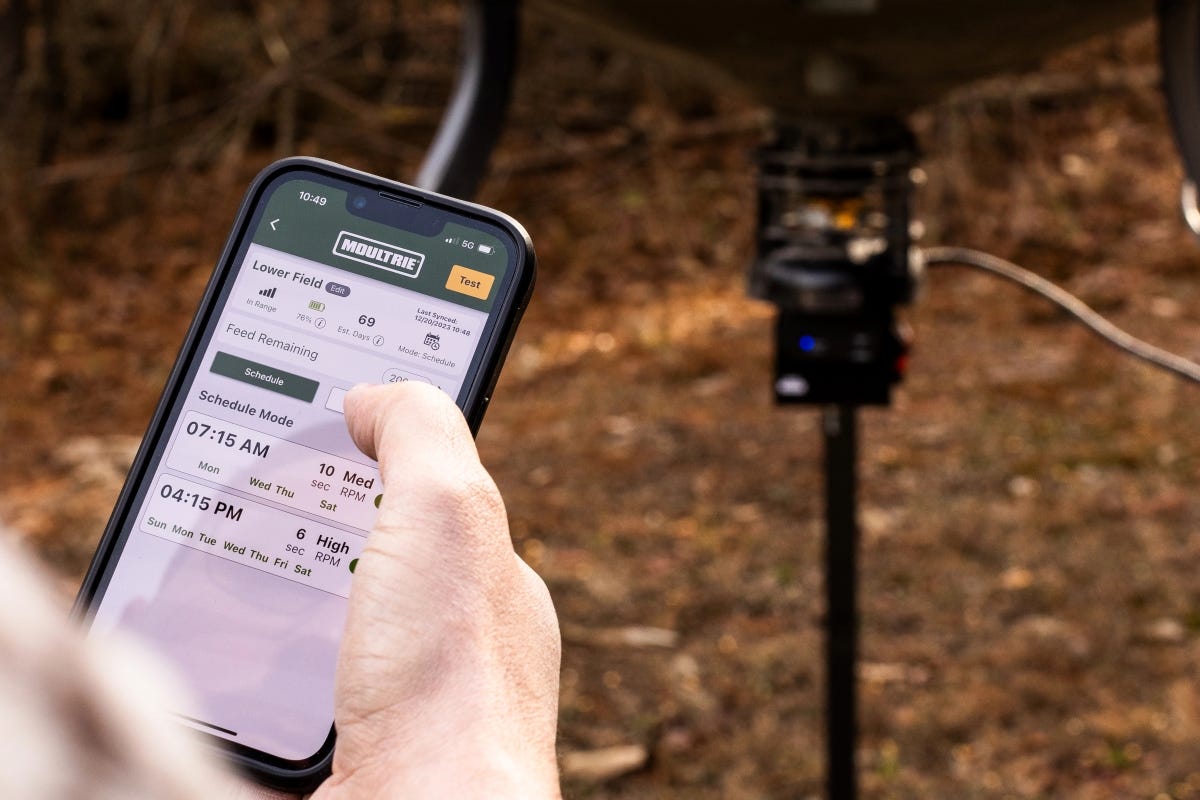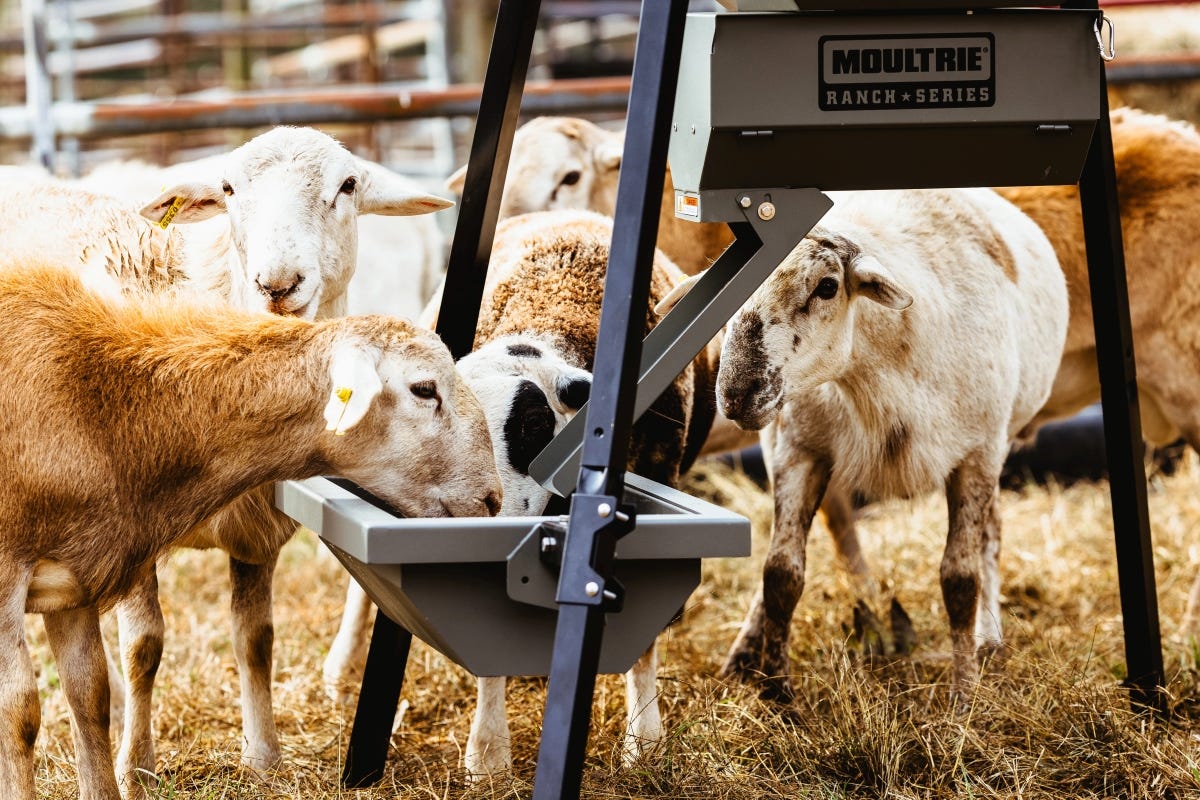- Feb 4, 2020
Can Protein Feed Help Grow Bigger Antlers?


What Makes Deer Antlers Grow Bigger?
Whether you hunt for meat or to hang out with family and friends, getting a trophy buck will always be a gratifying moment. Big bucks are hard to come by and they are always worth the chase.
One of the best ways to ensure you have big bucks around where you hunt is to not squeeze the trigger on young bucks. A trophy buck is typically a mature animals that is 4 years old or older. If you already practice letting young bucks walk then, what you feed them can make a significant difference. Give your local deer population the right food, and you might increase your chances of encountering a big buck with an impressive rack.
Protein for Bigger Antlers
One of the key nutrients in a deer's diet that can increase antler growth is protein. With protein-rich food, a buck can grow bigger antlers and body mass. When a buck doesn't have a balanced diet and lacks the protein it needs, its body will prioritize nourishing muscles over growing antlers. A buck with a lack of protein and other nutrients will consequently have smaller antlers than it might if it had gotten sufficient nutrients.
Minerals and Supplements for Increased Growth
Along with protein, several other minerals and supplements can help make deer antlers grow bigger. You can supply a few crucial minerals with the right plants to foster the deer's general health and antler growth:
- Calcium: As a critical component of bone and antler development, calcium is a key mineral for antler growth and health.
- Phosphorous: Providing this mineral is critical to healthy antler growth, as it works with calcium to form antlers.
- Trace elements: Iron, zinc and magnesium strongly contribute to the deer population's health and development.
Age and Genetics As Growth Factors
When you're looking to grow a trophy buck, you can consider a few other factors to get the right deer — such as deer age and genetics.
Does Genetics Affect Antler Growth?
Deer tend to grow larger and stay healthier with adequate nourishment. Their health passes on to the next two generations if nutrition continues to be available for them. A generation without access to enough food won't reach their genetic growth potential and will remain smaller. If you consistently provide nutrients for your local wildlife over time, it could influence multiple generations of deer and help them grow to their genetic potential.
A modern study looks at how proper nutrition not only affects the deer eating it, but also the impact it has on second and third generation offspring. There are three distinct regions in Mississippi — the Delta, Thin Loess and Lower Coastal Plain (LCP) — that produce deer of differing body and antlers sizes. The largest body weights and antler sizes come from the Delta region along the Mississippi River where there is fertile soil and the majority of the state’s agriculture is produced. The Thin Loess area produces smaller body weights and antler sizes and the LCP bucks are smaller yet — weighing on average 41 pounds lighter and 25 inches less of antler than bucks of the same age from the Delta. In this study biologists wanted to see if a high-quality diet could influence the deer to grow larger bodies and antlers or was their size purely dictated by genetics?
Over a 2-year period, Mississippi Department of Wildlife, Fisheries and Parks Biologists and graduate students from Mississippi State (MSU) Deer Lab captured pregnant does from the wild in these three areas of the state and placed them in high-fence enclosures at the MSU Deer Lab where they gave birth to their fawns. Once fawns were weaned, the mothers were removed from the study and all fawns were fed the same high-protein diet.
At three years of age, these deer showed moderate growth in body and antler size. The Delta and Thin Loess bucks gained about 9 pounds more than their wild counterparts while the LCP bucks didn’t put on any more weight. However, both the Thin Loess and LCP bucks added an additional 7 inches of antler while the Delta bucks remained unchanged.
The biggest surprise was how the diet impacted second-generation deer. Second generation deer at three years of age showed major improvements in body size and antler development. These second-generation deer were the fawns of the first-generation deer that were all fed a high-quality diet. The second-generation bucks from the LCP now had antler sizes as large as wild bucks from the Delta region and body weights 36 pounds heavier than wild bucks of the same age from the LCP region. Delta bucks added an additional 32 pounds on average to their weights and Thin Loess bucks put on 21 more pounds than the wild bucks from their region. On average, Delta bucks only added about 5 more inches of antler, while Thin Loess bucks put on 11 inches more. Amazingly, the LCP bucks showed the largest improvement with an average of 28 inches more antler than their wild counterparts!
This study highlights how important continuous quality nutrition is for developing larger deer and bigger antlers. This is especially critical in the late winter/early spring months when quality food and deer body weights are at their lowest. For example, if a buck has to rebuild muscle and fat reserves after the physiological rigors of the rut and harsh winter conditions, then its body will get priority over antlers for nutrition. Antlers can only reach full growth potential if the body’s needs are already met when antler growth starts in the spring. So, the longer it takes your deer herd to rebuild muscle density into the spring, the longer it will take for the surplus nutrition to go into antler production and subsequently more inches of antler. But what is the best way to consistently deliver high-quality protein food to your local deer?
Best Ways To Feed Protein
There are two ways to feed high-quality protein: plant it or feed protein pellets. Planting acres of soybeans is an excellent option, if you have the time, money, equipment and knowledge to get it done. However, anyone can feed high-protein feed pellets to ensure bucks and does are getting the required nutrition to reach their genetic potential. The best aspect of feeding protein pellets is that it can be done on thousands of continuous acres or on a 20-acre parcel of ground.
The main thing to remember when feeding protein, is that the deer need to be able to eat as much of the high-quality feed as possible to get the benefits. That’s why gravity feeders are the best option for delivering the feed to the deer whenever they need it. A quality gravity feeder will protect protein pellets from moisture and critters. As the deer eat the feed from a feed chute, gravity pulls more food from the hopper above for a continual flow with no battery power needed.
To determine the size of the feeder, consider how often you’ll be able to or want to fill feeders. If you want to fill feeders less often or if you have a high deer density, then you’ll want to look at something like a 55-gallon steel drum feeder that holds 400 pounds of feed. If you want to help your backyard deer herd grow bigger and healthier, then a more economical option would be an easy-to-use feeder that hangs on a tree trunk and holds roughly a bag of feed. You’ll have to fill it more often, but if it’s in your backyard that won’t be an issue. Even if you already own a spin-cast feeder, but want to convert it into a gravity feeder in the spring-through-fall months, there are conversion Gravity Feed Kits available.
It’s not a matter of does protein grow bigger antlers and bigger deer, that’s already been answered. The real question is, which feeder will help you get the job done right?
Do Deer Antlers Grow Bigger Each Year?
Deer antlers continue growing by the year as bucks mature, so passing up a younger buck and going for more mature ones gives you an advantage. If you give well-nourished bucks the time to develop, you'll have a higher chance of getting some hearty deer with impressive racks around your hunting property.
Choose Moultrie for Nutritious Deer Feed Options
If you're looking for the right nutrition to grow your deer population and get healthier, bigger bucks in the region, Moultrie has balanced protein feed options to help. Browse our deer attractants and feeder choices today and find the right product to enhance your game management plan.
*Last Updated: 10/12/2021






